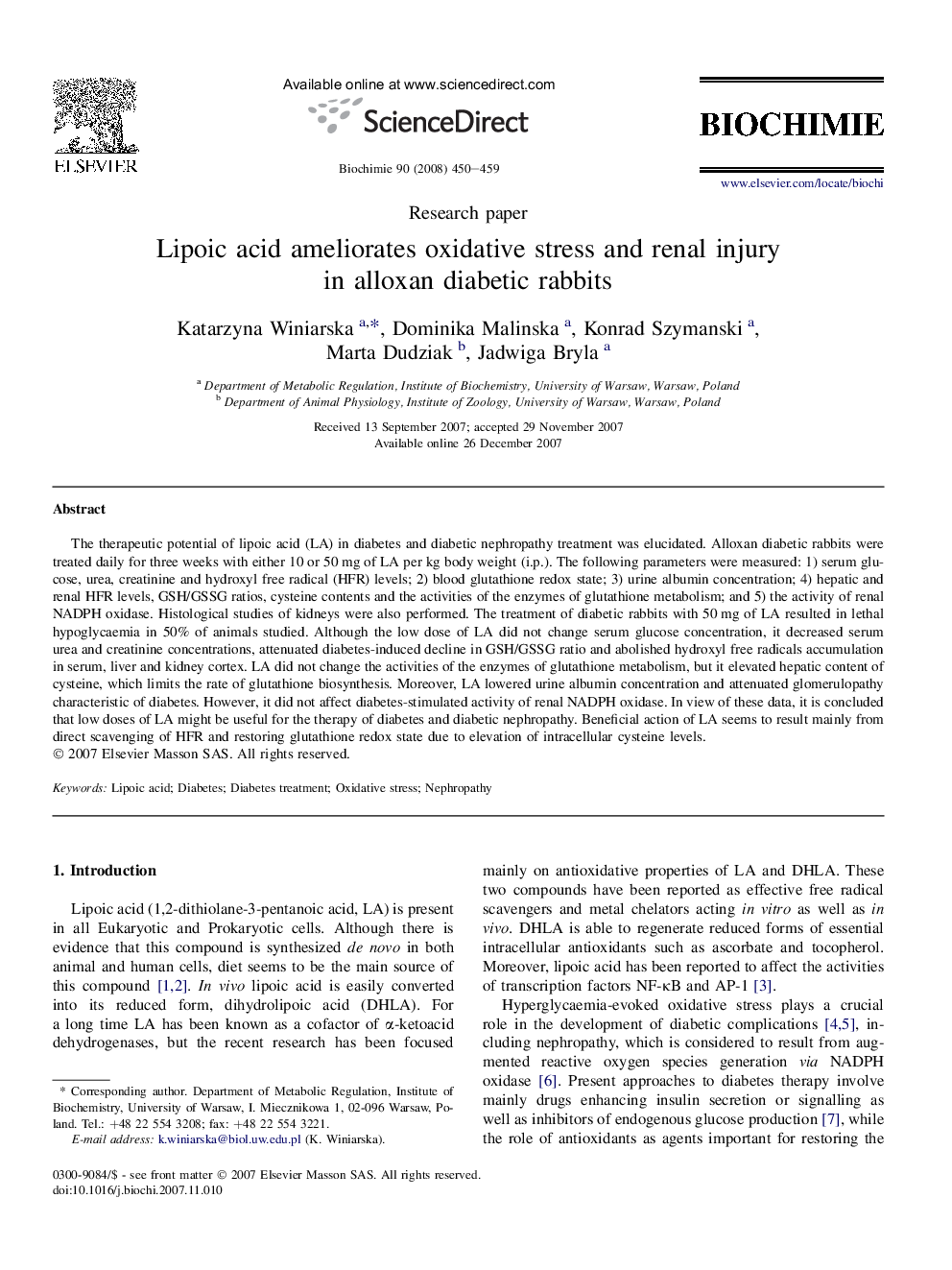| کد مقاله | کد نشریه | سال انتشار | مقاله انگلیسی | نسخه تمام متن |
|---|---|---|---|---|
| 1953225 | 1057257 | 2008 | 10 صفحه PDF | دانلود رایگان |

The therapeutic potential of lipoic acid (LA) in diabetes and diabetic nephropathy treatment was elucidated. Alloxan diabetic rabbits were treated daily for three weeks with either 10 or 50 mg of LA per kg body weight (i.p.). The following parameters were measured: 1) serum glucose, urea, creatinine and hydroxyl free radical (HFR) levels; 2) blood glutathione redox state; 3) urine albumin concentration; 4) hepatic and renal HFR levels, GSH/GSSG ratios, cysteine contents and the activities of the enzymes of glutathione metabolism; and 5) the activity of renal NADPH oxidase. Histological studies of kidneys were also performed. The treatment of diabetic rabbits with 50 mg of LA resulted in lethal hypoglycaemia in 50% of animals studied. Although the low dose of LA did not change serum glucose concentration, it decreased serum urea and creatinine concentrations, attenuated diabetes-induced decline in GSH/GSSG ratio and abolished hydroxyl free radicals accumulation in serum, liver and kidney cortex. LA did not change the activities of the enzymes of glutathione metabolism, but it elevated hepatic content of cysteine, which limits the rate of glutathione biosynthesis. Moreover, LA lowered urine albumin concentration and attenuated glomerulopathy characteristic of diabetes. However, it did not affect diabetes-stimulated activity of renal NADPH oxidase. In view of these data, it is concluded that low doses of LA might be useful for the therapy of diabetes and diabetic nephropathy. Beneficial action of LA seems to result mainly from direct scavenging of HFR and restoring glutathione redox state due to elevation of intracellular cysteine levels.
Journal: Biochimie - Volume 90, Issue 3, March 2008, Pages 450–459